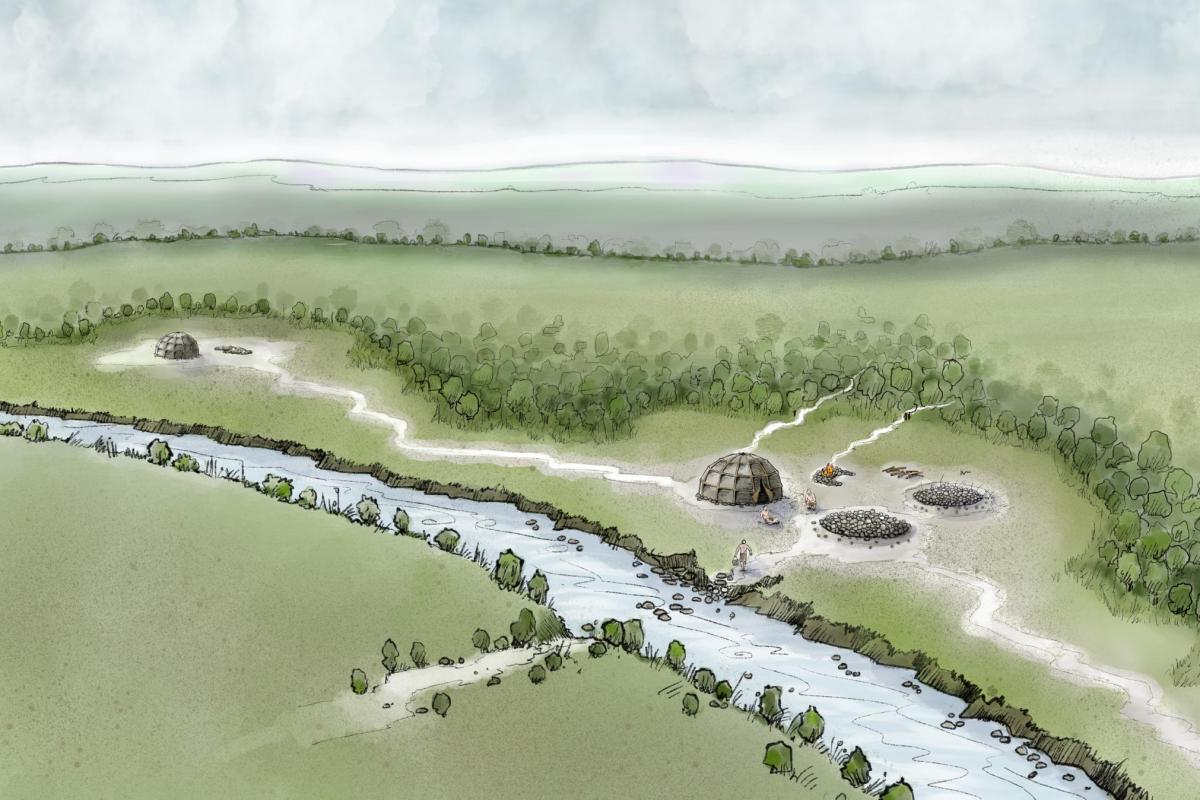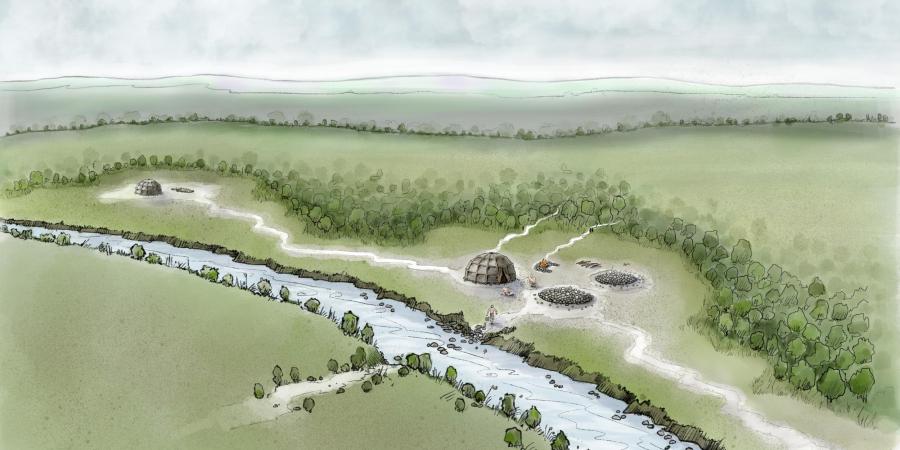Burnt Mounds
A rise of cracked rounded stones fractured in half, reveal deep bruised reds contrasting against the velvety ash and soot. The pile of burnt stones gets bigger and bigger as more stones are tipped onto it, forming a large waste of stones – a burnt mound.
Burnt mounds are often found in prehistoric landscapes, near a watercourse and with a trough nearby. Stones were taken hot and red from the fire to heat up the trough and once cool, were discarded in piles, forming the distinctive burnt mound features we see today.
But what was in the troughs? Perhaps they were heating up water to bathe in or even making alcohol? Activities such as this suggest that they may have been living nearby.
The burnt mound at Coleshill, Warwickshire is just 12 meters from the River Cole and its remains signify the start of our archaeological journey through the past at Coleshill.

